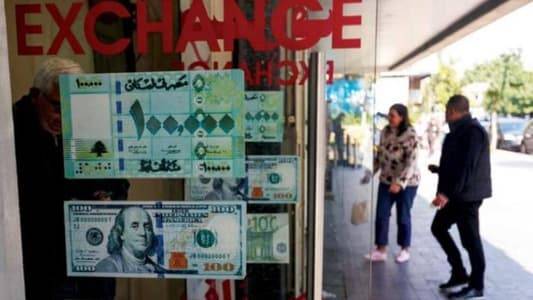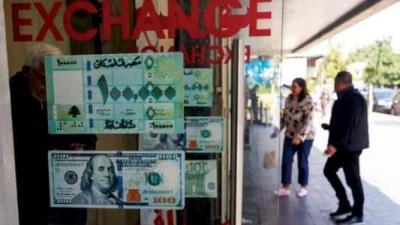With a bit of surprise and a lot of prior skepticism, the Central Council of the Central Bank of Lebanon decided to extend the validity of Circular No. 161 until the end of February next, which allows account holders to exchange liquidity in lira for cash dollars through the "Sayrafa" platform, at the currently announced rate of 38,000 lira per dollar. While the content of the decision was limited to the usual renewal since its initial issuance about two years ago, the markets maintained a state of caution mixed with tension following rumors of an intention to raise the reference price on the platform to 45,000 lira per dollar. This resulted in a cold immediate reaction among money exchangers and currency traders, as transactions in parallel markets maintained their pricing margins close to a threshold of 58,000 lira per dollar.
Simultaneously, specific answers could not be obtained from senior officials at banks contacted by "Asharq Al-Awsat" regarding the executive mechanisms to be adopted, especially concerning the quantities allowed for exchange. However, it was agreed that the "verbal" instructions would continue to limit beneficiaries to individuals with bank accounts and completely exclude companies, with the exchange amount not exceeding one hundred million lira, equivalent to about 2,600 dollars in cash for each beneficiary.
Regarding circulating information about updated directions from the monetary authority to withdraw significant amounts from the circulating cash in lira outside of the Central Bank, estimated at about 70 to 75 trillion lira, a concerned banking official confirmed that the central bank governor, Riad Salameh, has indeed obtained what resembles formal authorization from caretaker prime minister Najib Mikati, in cooperation with Minister of Finance Youssef Khalil, to take necessary precautionary and procedural measures to ensure the reduction of monetary chaos and restore the central role of the platform in managing liquidity in lira and dollars.
While the relevant data are clarified, especially among the operational proposals that Salameh presented at the Central Council meeting yesterday (Monday), the banking official focuses on the objective link between the exchange rate and the negative or positive pressures resulting from the current political conditions, which are fraught with sharp vertical divides regarding imminent obligations, primarily the re-establishment of the executive authority and initiating a consensus that ensures addressing the persistent problem of the presidential vacancy, as well as containing the emerging disturbances in the judicial authority.
It is rumored that the governor of the Central Bank will, among the updated measures, stop purchasing dollars from money transfer companies and some money exchangers to cover part of his interventions in offering cash dollars through the Sayrafa platform, after realizing this loophole has been exploited to fuel speculation by amplifying demand for the green currency in parallel markets, taking advantage of prior information regarding daily purchases executed on behalf of the central bank.
There is a strong conviction among bankers and analysts that determining the real exchange rate of the lira is contingent on concentrating the majority of transactions through the single official platform managed by the central bank. This process inevitably requires daily coordination with the Ministry of Finance in managing and controlling the liquidity balance. The ministry's decision to collect cash for certain fees and taxes will help reduce the level of demand for dollars, whether through the platform or through money exchange companies.
The banking official notes that the "discipline" of monetary affairs, by verifying daily operations and strictly adhering to "Know Your Customer" rules, will not only help calm the markets that have seen a massive outcry in recent days leading to the dollar approaching 70,000 lira. Amid growing cash circulation, the level of apprehension among correspondent international banks has increased regarding the opening of channels for dubious operations classified as financial crimes through banking channels. This has prompted most local banks to establish special specifications for executing intervention mechanisms to offer dollars by the central bank, forcing it later to restrict these to individuals with accounts and specific monthly amounts.
In general, bankers hope to restore the true background of issuing Circular 161 in the first place. Its aim, according to a disclosure made by Salameh himself, is to keep the exchange rate of the dollar in the parallel market under control by withdrawing lira from the market and injecting dollars, as well as enabling public sector employees to receive their salaries in dollars, achieving the dual goal of calming the markets while also maintaining the purchasing power of employees.




